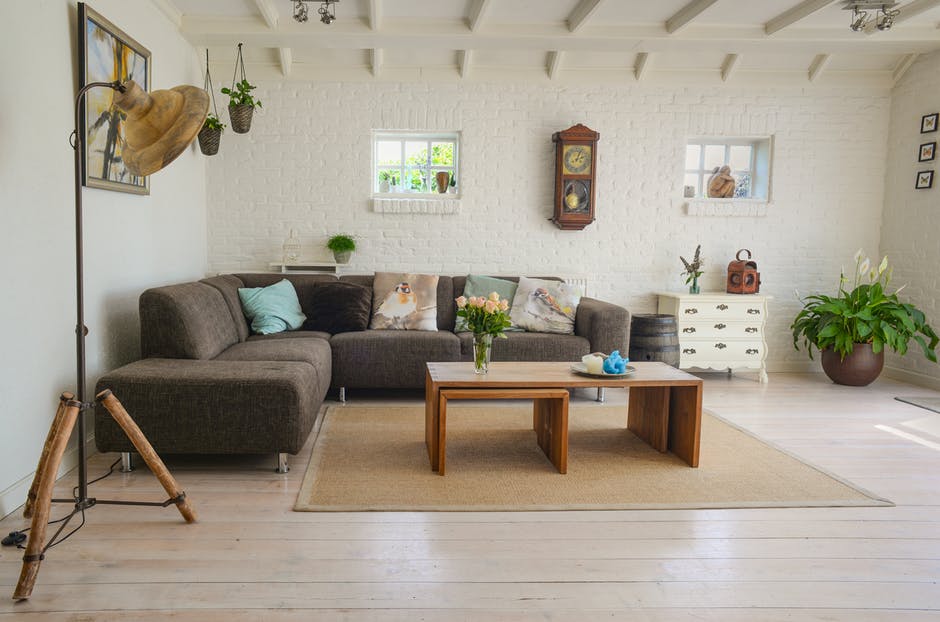In leadership, a visionary leader can inspire and guide others toward a brighter future. Leading with vision and impact involves more than just setting goals; it requires a profound understanding of the organization’s purpose, a clear picture of the desired outcomes, and the capacity to influence and motivate teams to achieve extraordinary results. This article will explore the essence of leading with vision and impact, the key traits of visionary leaders, and the strategies they employ to create lasting change and drive success.

At its core, visionary leadership is about looking beyond the present and envisioning a better tomorrow. It involves inspiring change, driving success by imagining a better future, and aligning teams with a shared purpose. Visionary leaders possess the innate ability to see the bigger picture, understand the organization’s purpose, and articulate a compelling vision that resonates with stakeholders. They communicate this vision in a way that inspires and aligns their teams, fostering a collective commitment to achieving the shared goals. By understanding the significance of visionary leadership, aspiring leaders can cultivate this crucial trait to lead with impact.
Visionary leaders exhibit a unique set of traits that set them apart. Academic leaders possess a multitude of critical characteristics that set them apart. Their foresight enables them to anticipate trends, challenges, and opportunities, positioning their organization for success. Fuelled by a burning passion for their vision, they inspire unwavering dedication and enthusiasm in others, driving collective efforts towards shared goals. Embracing challenges as stepping stones to success, they maintain resilience, motivating their teams to persevere through tough times. Empathy is a vital trait that fosters a positive work culture, understanding the needs of groups and stakeholders. Incorporating HBDI, Herrmann Brain Dominance Instrument, enhances leadership by understanding team members’ preferences and fostering effective communication.
Leading with vision and impact requires a thoughtful approach and strategic implementation. Visionary leaders understand that a clear and compelling vision is the guiding force for their organization. They effectively articulate this vision, ensuring every member feels connected to the overarching purpose. Additionally, they build a strong leadership team comprising individuals who share the invention and are dedicated to its realization. This cohesive team enhances the collective impact and ensures the seamless execution of the vision.
Visionary leaders empower their teams by delegating responsibilities and authority, fostering a culture of ownership and accountability. They encourage innovation and creativity, creating an environment where experimentation and new ideas are welcomed. Leading by example, these leaders embody the values they advocate, inspiring their teams to follow suit. They embrace change as a means of progress, motivating their teams to adapt to evolving circumstances. Furthermore, visionary leaders prioritize continuous learning, fostering a culture of growth and adaptability within the organization. They understand the value of building alliances and collaborations with like-minded organizations and stakeholders, broadening the impact of their vision and driving collective success.
Visionary leadership can transform organizations and industries. Innovative leaders are skilled at inspiring and motivating their teams, leading to increased engagement and dedication to the organization’s goals. They foster a culture of innovation, encouraging creativity and pushing the boundaries of what is possible. This emphasis on innovation drives growth and helps the organization stay ahead of the competition. Visionary leaders exhibit resilience and adaptability, effectively communicating a clear vision that enables the organization to navigate challenges and thrive in changing environments.
Visionary leaders cultivate a positive organizational culture of trust, collaboration, and creativity. This positive work environment increases employee satisfaction and productivity, creating a solid camaraderie among team members. Furthermore, their strategic vision and thoughtful decision-making ensure long-term sustainability for the organization, steering it towards sustainable growth and prosperity. Overall, the impact of visionary leadership extends beyond achieving short-term objectives; it lays the foundation for a thriving, dynamic, and successful organization with a bright future ahead.
A leadership development program holds immense significance in nurturing influential and visionary leaders. Such programs provide essential training, mentorship, and skill-building opportunities to aspiring leaders, enabling them to articulate a compelling vision and lead with impact. Participants enhance their communication, strategic thinking, and decision-making abilities through targeted coaching and experiential learning. Leadership development program foster innovation and encourage a culture of adaptability, equipping leaders to navigate challenges and drive organizational success. Furthermore, these programs promote a positive work environment, boost employee morale, and improve team performance. Investing in a leadership development program ensures a pipeline of competent leaders who steer organizations toward sustainable growth and success in a rapidly changing world.
Leading with vision and impact is a transformational approach that brings meaningful change and drives success. Visionary leaders can envision a better future, inspire others to share their vision and lead with passion and purpose. By understanding the critical traits of academic leadership and employing strategic strategies, leaders can create a lasting impact on their organizations, teams, and stakeholders. Embracing visionary leadership is not only about setting goals; it is about guiding others toward a brighter and more prosperous future. As organizations face challenges and opportunities, academic leaders will be crucial in navigating the dynamic landscape and leaving a positive legacy for future generations.











 Email advertising, search engine optimization and paid press all do an excellent job of bringing prospects and leads, but they still are not as successful as an in-person meeting sealed with a handshake together with a business card exchange.
Email advertising, search engine optimization and paid press all do an excellent job of bringing prospects and leads, but they still are not as successful as an in-person meeting sealed with a handshake together with a business card exchange. What exactly are young people and aspiring homeowners to do right now? Let’s say you have a savings program and a monthly budget, your savings account is growing steadily, you are diligently socking away your shift, you are avoiding spending large at the pub on nights out, and you have even cut down avocado toast and soy lattes, and don’t forget cutting
What exactly are young people and aspiring homeowners to do right now? Let’s say you have a savings program and a monthly budget, your savings account is growing steadily, you are diligently socking away your shift, you are avoiding spending large at the pub on nights out, and you have even cut down avocado toast and soy lattes, and don’t forget cutting  Managed funds see your money directed into the stock exchange, but rather than you going directly to your stockbroker or online to make trades, or on house
Managed funds see your money directed into the stock exchange, but rather than you going directly to your stockbroker or online to make trades, or on house  Even if a guide comes to your site and does not leave their contact information, it is still possible to gather plenty of information about them. Lead monitoring follows a lead, can track where they come from, records which links they click and so forth. This builds up a detailed personal profile for each guide. If the lead does leave their email or contact number, you can then reach out. Constantly gathering online data enables you to understand which parts of your site get the most attention so that you can optimize the website. Personal profiles also let you get in touch with leads according to their unique interests and online activity.
Even if a guide comes to your site and does not leave their contact information, it is still possible to gather plenty of information about them. Lead monitoring follows a lead, can track where they come from, records which links they click and so forth. This builds up a detailed personal profile for each guide. If the lead does leave their email or contact number, you can then reach out. Constantly gathering online data enables you to understand which parts of your site get the most attention so that you can optimize the website. Personal profiles also let you get in touch with leads according to their unique interests and online activity. Therapy of acne
Therapy of acne It turns out, however, that in spite of the importance of this crucial evolution of cars, this is one of the problems that is a lot more difficult to conquer than it first seems. Part of the problem is that as automobiles have advanced and various technologies are integrated into them, they have evolved into enormously complex machines. Rather than just adding slight changes to your car or the way it looks,
It turns out, however, that in spite of the importance of this crucial evolution of cars, this is one of the problems that is a lot more difficult to conquer than it first seems. Part of the problem is that as automobiles have advanced and various technologies are integrated into them, they have evolved into enormously complex machines. Rather than just adding slight changes to your car or the way it looks,  If ever there was an industry ripe for disruption, and needing a technician overhaul; the automotive sector is it. That is why many conventional car makers are involved, and why many tech companies are salivating at an opportunity to have a piece of the multi-trillion-dollar international automotive sector. The technological and business model for autos is slowly but surely moving towards a software-and-services-focused strategy. It is also why companies like Tesla have made such a splash. Despite its very small sales, it is regarded as a credible effort to drive the sort of organizational and technological disruption that lots of individuals believe is required to transform the automotive sector. In truth, though, due to the inherent and ingrained nature of the automobile supply chain, even Tesla must follow a number of the conventions of numerous Tier 1 providers, etc., that its rivals use. The issue is that deeply embedded.
If ever there was an industry ripe for disruption, and needing a technician overhaul; the automotive sector is it. That is why many conventional car makers are involved, and why many tech companies are salivating at an opportunity to have a piece of the multi-trillion-dollar international automotive sector. The technological and business model for autos is slowly but surely moving towards a software-and-services-focused strategy. It is also why companies like Tesla have made such a splash. Despite its very small sales, it is regarded as a credible effort to drive the sort of organizational and technological disruption that lots of individuals believe is required to transform the automotive sector. In truth, though, due to the inherent and ingrained nature of the automobile supply chain, even Tesla must follow a number of the conventions of numerous Tier 1 providers, etc., that its rivals use. The issue is that deeply embedded. preschools and concluded that the way young women were dressed inhibited their ability to manoeuvre around. Turns out it’s tough to creep around in a dress. The women also had to track how they moved in their own clothes. Wearing a dress meant you could not follow suit once your playmates propped their feet up on a desk. The girls’ clothes were a continual source of diversion. Tights needed to be yanked up. Bows needed to be straightened. Martin watched five year old women
preschools and concluded that the way young women were dressed inhibited their ability to manoeuvre around. Turns out it’s tough to creep around in a dress. The women also had to track how they moved in their own clothes. Wearing a dress meant you could not follow suit once your playmates propped their feet up on a desk. The girls’ clothes were a continual source of diversion. Tights needed to be yanked up. Bows needed to be straightened. Martin watched five year old women  We tested it for four months in an organisation with approximately 200 users. In that moment, it noted 22 bugs and all were fixed automatically. Each solution was discovered on those “night shifts”, meaning that when the developer arrived in the office in the morning, a list of suggested bug fixes were awaiting them. The concept is to set the developer in control and change their job, meaning less regular checking and more time for creativity. It is roughly equivalent to how spell checkers have taken a lot of the plod from proof reading a document. Both tools support the author, and decrease the amount of time you likely spend swearing at the screen. We have been able to prove that the identical system could be applied to other jobs, including making applications run faster and improving the accuracy of applications designed to forecast things.
We tested it for four months in an organisation with approximately 200 users. In that moment, it noted 22 bugs and all were fixed automatically. Each solution was discovered on those “night shifts”, meaning that when the developer arrived in the office in the morning, a list of suggested bug fixes were awaiting them. The concept is to set the developer in control and change their job, meaning less regular checking and more time for creativity. It is roughly equivalent to how spell checkers have taken a lot of the plod from proof reading a document. Both tools support the author, and decrease the amount of time you likely spend swearing at the screen. We have been able to prove that the identical system could be applied to other jobs, including making applications run faster and improving the accuracy of applications designed to forecast things. They are not all in Fitzroy
They are not all in Fitzroy Retro Style
Retro Style The new,
The new,  opposed to the urgency of the day job, says Andy Mee, a ‘business doctor’ covering the
opposed to the urgency of the day job, says Andy Mee, a ‘business doctor’ covering the  it ready to go to your designer. Not having
it ready to go to your designer. Not having 

 An online shopping site called wish.com, was recently advertising some plus size leather look shorts at an extremely low price of only $9. But what caused some super reactions was how they were modeled on the site.
An online shopping site called wish.com, was recently advertising some plus size leather look shorts at an extremely low price of only $9. But what caused some super reactions was how they were modeled on the site.